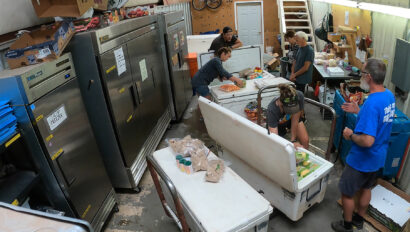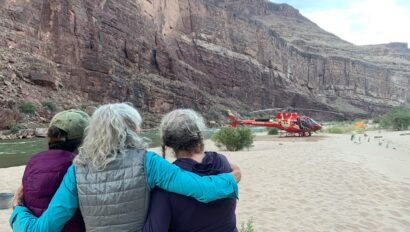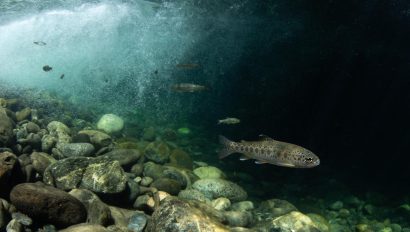A Thirsty West: How Did We Get Here?
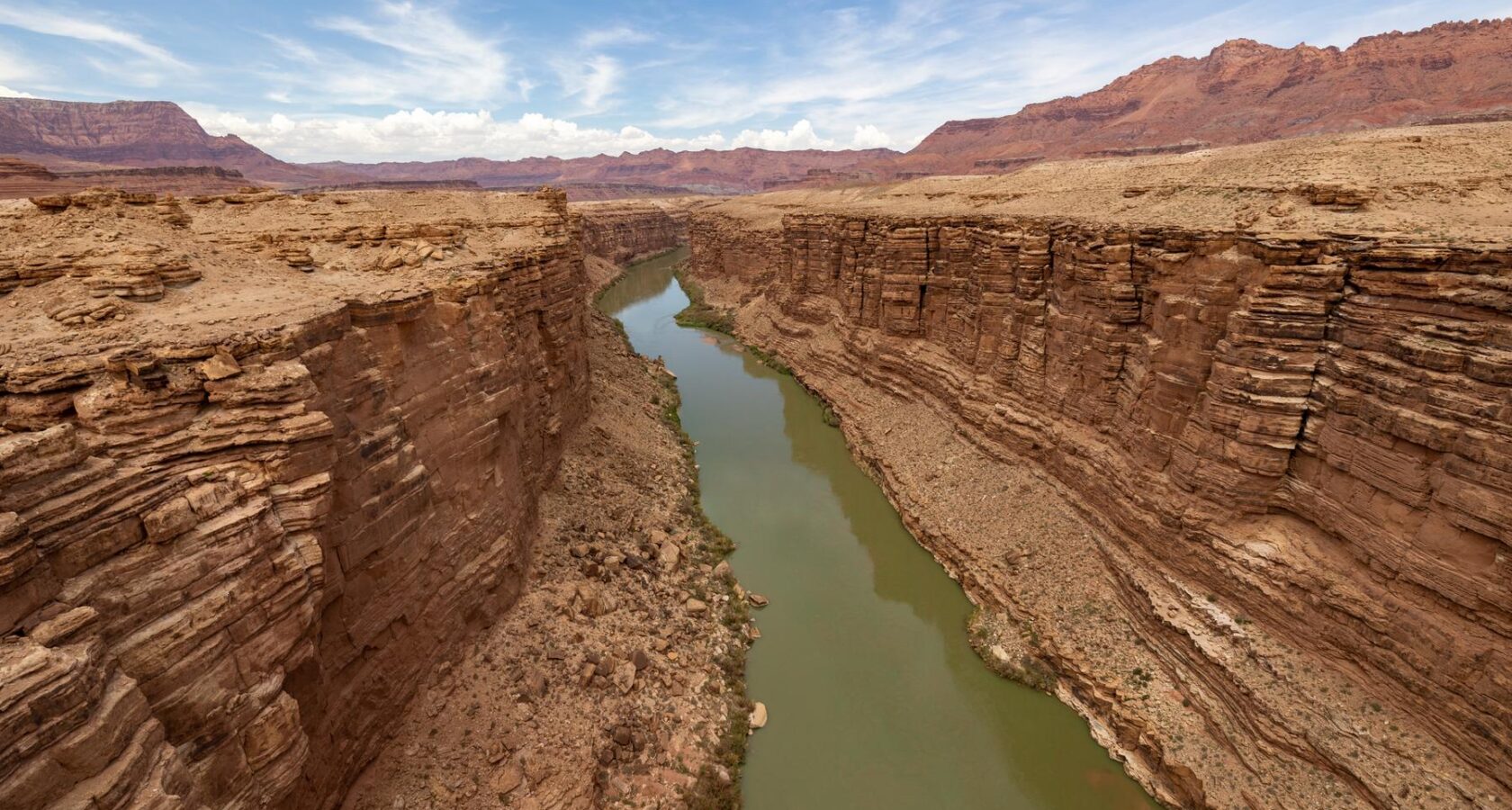

The Colorado River is facing a water crisis like nothing we’ve ever seen—and here at OARS, we acknowledge the complexity and the weight of this issue. In an attempt to be at the forefront of this challenge for our guests and broader community, we’re launching an investigative series throughout this year that digs deeper into the future of the Colorado and the communities that depend on it—all infused with a healthy dose of optimism. This is the second article in the series.
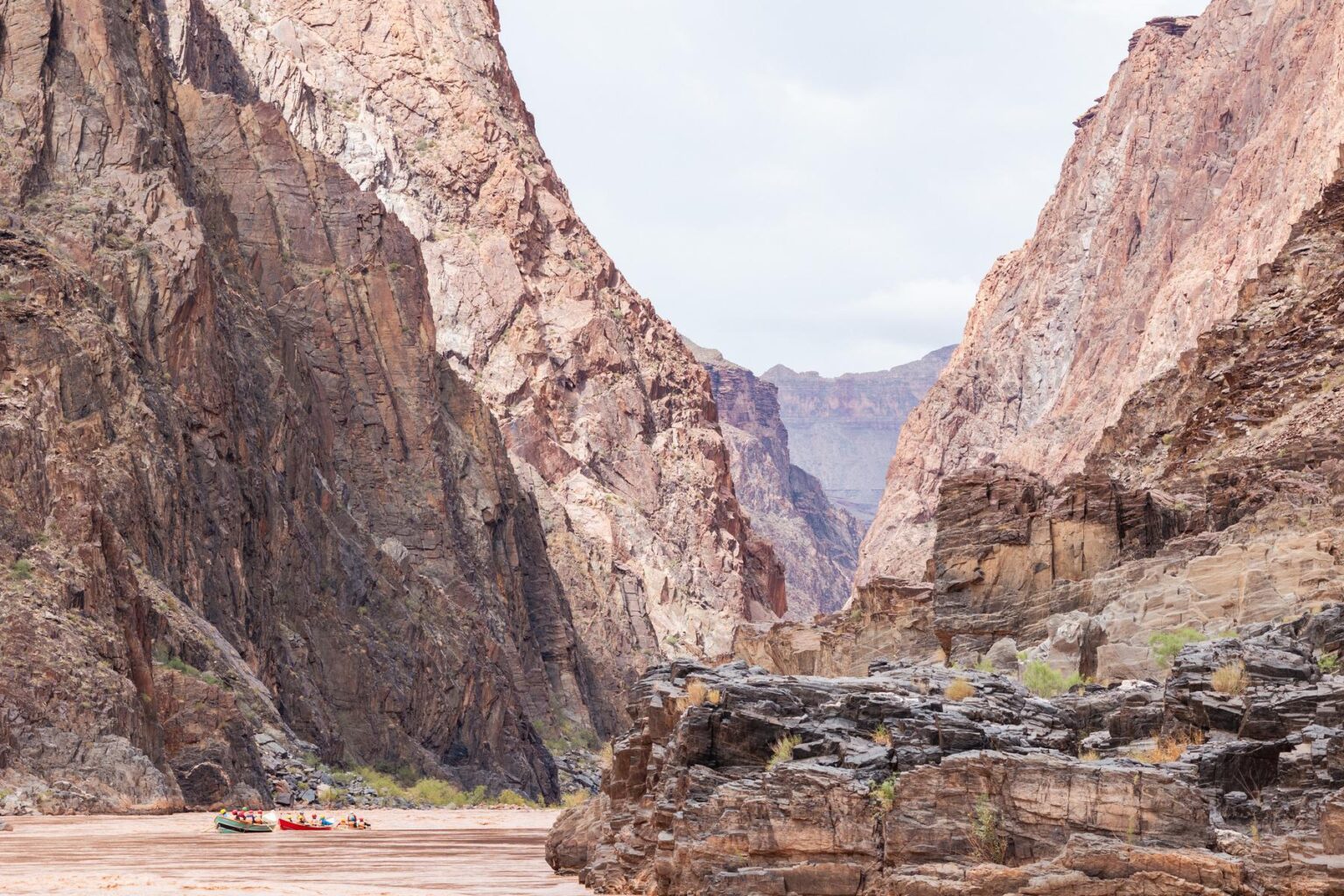
We’re All Connected to the Colorado River
We need water. We need rivers. And we need the Colorado.
Beginning with the Tribal Nations that have lived in this landscape since time immemorial, the Colorado River has delivered life, sustenance and resilience. Today, the American West, and more than 40 million people, is inextricably linked to the water that flows through this legendary river from its headwaters in the Rocky Mountains of Colorado to the delta in the Mexicali Valley, historically connecting the mountains to the sea. If you’ve been one of the lucky ones to find yourself on a raft or a dory, gazing up at the red rock walls of Grand Canyon, you can thank the Colorado for carving this Seventh Wonder of the World, this grand cathedral in the desert. And regardless of where you are in the country, if you’ve eaten a salad or a steak, you’re connected to the Colorado River. Eighty percent of its flow irrigates more than 5 million acres of agricultural lands that feed a nation — and the world.
So why in the world are we sucking this life force dry?
To get to the root of this problem and find our steps forward, we’ve got to refresh ourselves on our history and our collective roles in it to truly understand how we got here. It’s only from that place that we can figure out how to move into a future that solves for the whole system — and everyone in it. Because whether we want to or not, the only way we’re going to come through this is together.
It starts with the Colorado River Compact of 1922, an agreement negotiated a century ago by the Colorado Basin states, which divided the nearly 250,000-square-mile watershed into two basins: The Upper Basin (Colorado, New Mexico, Utah and Wyoming) and the Lower Basin (Arizona, California and Nevada). The dividing line is Lees Ferry, which, perhaps poignantly, is where Grand Canyon river trips push into the current.
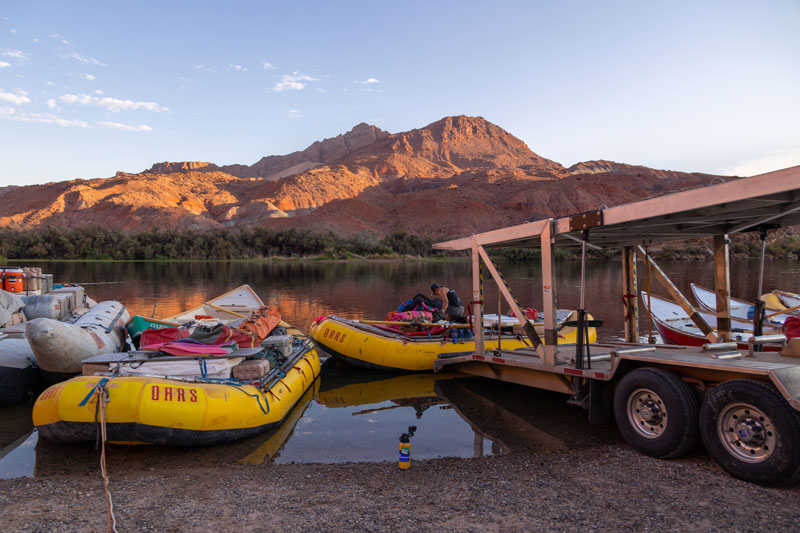
As the compact states, “The major purposes of this compact are to provide for the equitable division and apportionment of the use of the waters of the Colorado River System.” This all sounds great, but a few things were wrong with the compact from the jump.
Let’s start with who was not at that table in 1922.
Noticeably absent from the compact are several vital and powerful parties: The Tribes of the Colorado Basin and Mexico.
There are 30 federally recognized tribes of the Colorado Basin, all sovereign nations with some of the most senior — and largest — water rights. And while the U.S. Supreme Court ruled in 1908 that tribes have rights to “as much water as they need to establish a permanent homeland,” those rights, while briefly mentioned, were not honored or allocated in the compact. Today, 22 of the Tribes have federally recognized rights to about a quarter of the water — or about 3.2 million acre feet — in the basin, but many still don’t have the infrastructure to access their water rights and do not yet have a seat at the table where Colorado River management decisions are being made.
“The American government was still just conquering this area,” says Ean Thomas Tafoya, the Colorado State Director for GreenLatinos. Tafoya, a fourth generation Chicano, and a descendent of the Ohkay Owingeh and Apache peoples, advocates for Indigenous and Latino rights in Colorado and beyond. “And I say conquer legitimately. Because genocide went alongside all of this for so many people. The government has continued to over-allocate based on these “proprietary” rights for colonizers rather than where our water flows really were.”
While slowly, things are shifting. In February, the Department of the Interior announced a nearly $580 million allocation to continue fulfilling settlements of Tribal water rights claims.
And Mexico, while mentioned in the compact, wasn’t included in allocations until a 1944 Treaty delivered rights to 1.5 million acre feet. But because of the severity of the drought in the basin, Mexico has also agreed to take part in reductions when there is a shortage, with their share decreasing by 7% in 2023.
It’s also worth saying that nowhere in the compact is there language recognizing the value of water to natural systems, wildlife or recreation of any kind. So, how, if so many people — and the ecosystem itself — were left out of an agreement, is this framework still considered “the law of the river” today?
How Did We Get Here?
While the federal agencies, the Bureau of Reclamation and its parent agency, the Department of Interior, hold the ultimate card in managing the system of dams and reservoirs on the Colorado River, the basin states have been operating off the compact, which established an “exclusive” allotment of 7.5 million acre feet of water for each basin, with an additional one million acre feet available to the Lower Basin, annually — in perpetuity.
Stemming from disputes as colonial settlers tapped an already hard-working Colorado, the compact allocated water as “first in time, first in right,” which is a principle of prior appropriation. This is in essence “calling dibs” on water: The first person to use it has the most senior right, with those following having junior water rights to those preceding them.
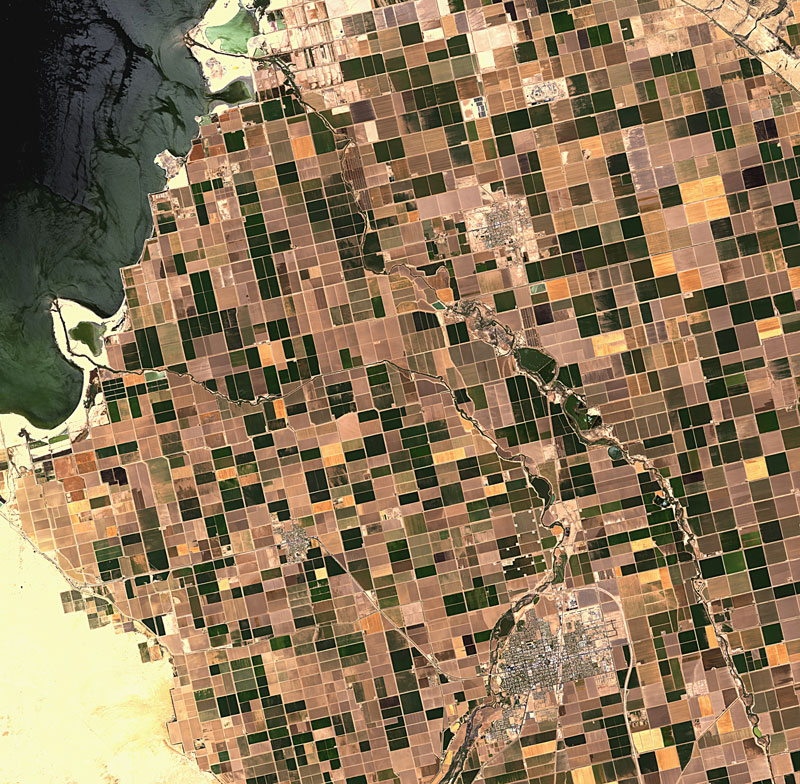
The not-even-decade-old state of California was quick to put Colorado River water to use irrigating land at the turn of the 20th Century, which is why they have the most senior rights of the states — with 4.4 million acre feet of water allocated — more than any other state. In times of scarcity, like the last 10 years, the compact prohibits the Upper Basin from depleting flows to the Lower Basin. The vast majority of the Colorado’s water goes to agriculture, irrigating about 3.2 million acres within the Colorado River Basin itself and another 2.5 million acres outside of the basin, places like southern California’s Imperial Valley. But after decades of over-allocation combined with climate change and drought, the 1.5 million acre feet of water lost to evaporation, the rightful addition of the interests of Tribes and Mexico, and climate change firmly at the wheel; there is simply not enough water to meet those obligations — no matter how you slice it.
“We’ve allowed disconnection and distance between people’s lives and the resources that we use and where they come from,” says René Henery, PhD, an ecologist and artist who holds a joint position with the University of Nevada, Reno, Global Water Center and as the California Science Director for Trout Unlimited. “And now we have a really pressing need and some specific opportunities to bridge those gaps and reconnect people. But I think the success or the capacity of all of that is just going to be a reflection of where we are in our relationships with each other.”
Despite recent big winter storms in the West, Lake Powell and Lake Mead, the reservoirs behind Glen Canyon and Hoover dams, respectively, are at record low levels. As Henery says, “drought is not the weather.”
Which leads us to the other assumption the compact made: that we’d never have a shortage of water.
The compact is based on a guaranteed flow of at least 16 million acre feet, but for the majority of the 21st Century we’ve seen an average Colorado River flow of 12.4 million acre feet and unfortunately, that shortage is baked in. According to the United States Geological Survey, “The period 1905-1922, which was used to estimate water production allocated under the Colorado River Compact, had the highest long-term annual flow volume in the 20th century, averaging 16.1 MAF at [Lees] Ferry.” While no one at the time could likely have predicted the longest stretch of dry years in over a millennium, the compact architects had, and knew, that the data they based the agreement on was from an unusually wet period, leaving very little room for changes within the system. Even before the compact was negotiated, John Wesley Powell warned, “there is not sufficient water to supply these lands.”
“The environmental conditions we’re witnessing along the Colorado River below Glen Canyon Dam are unprecedented, so it’s challenging to say exactly what will happen — particularly since different management actions will have different impacts on the ecosystem,” says Emily Palmquist, a riparian ecologist with the Southwest Biological Science Center (SBSC). “Still, there’s an exceptional number of dedicated people who are working hard at understanding what’s happening now, using the best of our knowledge to predict what might happen under a range of future conditions, and using that information to try to balance the many needs placed on this river.”
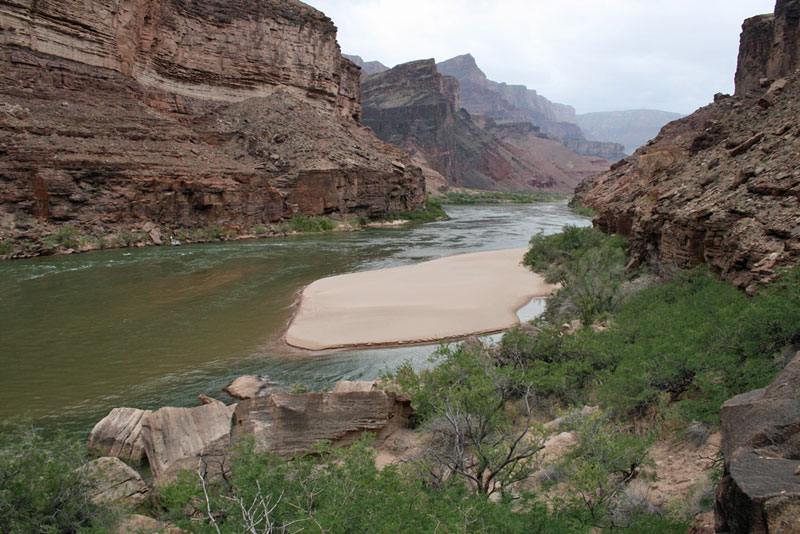
The SBSC aims to address how changes to dam operations will impact the Colorado River ecosystem. Palmquist adds, “The world is always changing and right now it’s changing quickly. The work we do studying the impacts of environmental change on plants, fish, sediment, insects, recreational use, and the overall health of the Colorado River ecosystem is aimed at helping decision makers push that change in a sustainable direction.”
And what does that push in a sustainable direction look like?
“What’s really needed is for people to come in with an open mind,” says Jessica Thrasher, an applied anthropologist and the Education and Outreach Manager for the Colorado Stormwater Center. “We can’t do things the same way we have done them before, now is the time for innovation, collaboration, and inclusion of diverse perspectives to create solutions to our water challenges.”
Thrasher continues, “We have a lot to learn from the Tribal Nations in how to respect, steward, and value water and natural resources. Water is life. How can this ethos be woven into how we talk about water, use water, and steward water? What if we were able to reframe the water conversation and really value water, not as a commodity to own, but as a resource vital to all life on Earth to be protected and cherished. What if we were just able to stop and really value water?”
Where We Are Now
For the first time, in 2019, the Tribes and Mexico played a central role with the states in crafting the Colorado River Basin Drought Contingency Plans, which prescribed a series of water cuts to address the ongoing drought in the Colorado Basin.
And last year, in response to rapidly escalating conditions, the federal agencies stepped in, calling on basin states to cut two- to four-million acre feet and kicking off a review of operations and a process that will include proposed alternatives, including possible federally-mandated cuts.
“We are committed to taking prompt and decisive action necessary to protect the Colorado River System and all those who depend on it,” Interior Secretary Deb Haaland said in a statement.
A draft of those proposed alternatives is expected from federal agencies this spring, followed by a public review and comment period. From there, we can expect to hear more about decisions for 2024 operations on the Colorado.
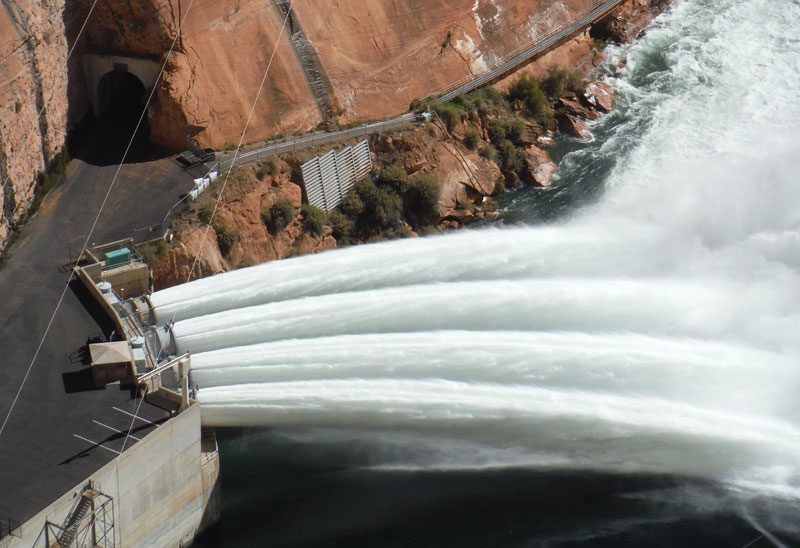
Operations right now are largely aimed at keeping water levels behind Glen Canyon and Hoover dams above “dead pool,” which is when reservoirs reach a level too low to flow through the dam at all — making it impossible to deliver power and water and essentially renders many downstream water rights meaningless. In 2022, releases from Lake Powell were decreased by about 15% — to 7 million acre feet and according to the agencies, we can expect about the same for 2023. But it’s clear that we’re no longer operating in a guaranteed system; it’s dynamic and changing daily.
If this all sounds complex, it’s because it is. And at the same time, it’s incredibly simple: We don’t have enough water to continue to operate as we have been — and everyone’s going to need to give a little.
Where We Go From Here
“There’s not enough water if we continue on the trajectory we are on. I’m from the headwaters state, we’re the closest to the water, but we’re united in a country together and as a people — together,” says Tafoya, who is also running for Mayor of Denver. “We’re going to have to make sacrifices to make sure that everyone has enough. And everyone’s going to need to make those same sacrifices.”
And Tafoya emphasizes the need to make sure all parties are at the table if we’re to build a brighter future.
“It’s never too late to turn the page towards justice,” Tafoya says. “I think we have to allow the Tribal leaders to be at the table and to truly be leaders. We have to let the people who are most impacted be at the table and lead.”
Thrasher agrees, “Unless you have people in the room with a different perspective in these big meetings about water, if you do not have diverse voices, diverse perspectives, diverse backgrounds, then we’re doomed to make the same mistakes over and over and over.”
And I keep going back to Thrasher’s words, “What if we were just able to stop and really value water?”
What if we didn’t look at the Colorado as a commodity, as an allocation to be delivered or guaranteed? What if we stopped looking at the reservoirs as banks that should never go empty? What if we looked at the Colorado as a river, as water that quite literally gives life to everything it touches in this landscape?
“Water connects all of us. It’s incredibly important that we advocate for it,” Tafoya says.
Photos: Colorado River through Grand Canyon – Dylan Silver; Lees Ferry – Dylan Silver; California’s Imperial Valley – >ESA; Sand bar in the Colorado River – USGS; Glen Canyon Dam jet tubes releasing water – USGS
Related Posts
Sign up for Our Newsletter

